Air travel is often regarded as the pinnacle of human ingenuity and engineering prowess. Yet, there are some airports across the globe which, due to their uniquely challenging conditions, provide a sobering reminder of the inherent risks involved in aviation.
In this blog post, we aim to shed light on the Top 10 airports pilots consider to be dangerous. These airports, located in various parts of the world, present a combination of factors — such as extreme weather, high-altitude, geographical constraints, and notably, incredibly short runways — that contribute to their perilous reputation.
As we navigate through this list, we invite readers to appreciate the skill and courage of the pilots who defy these challenges and to develop a deeper understanding of the complexities and nuances involved in aviation safety.
1. Tenzing-Hillary Airport, Nepal
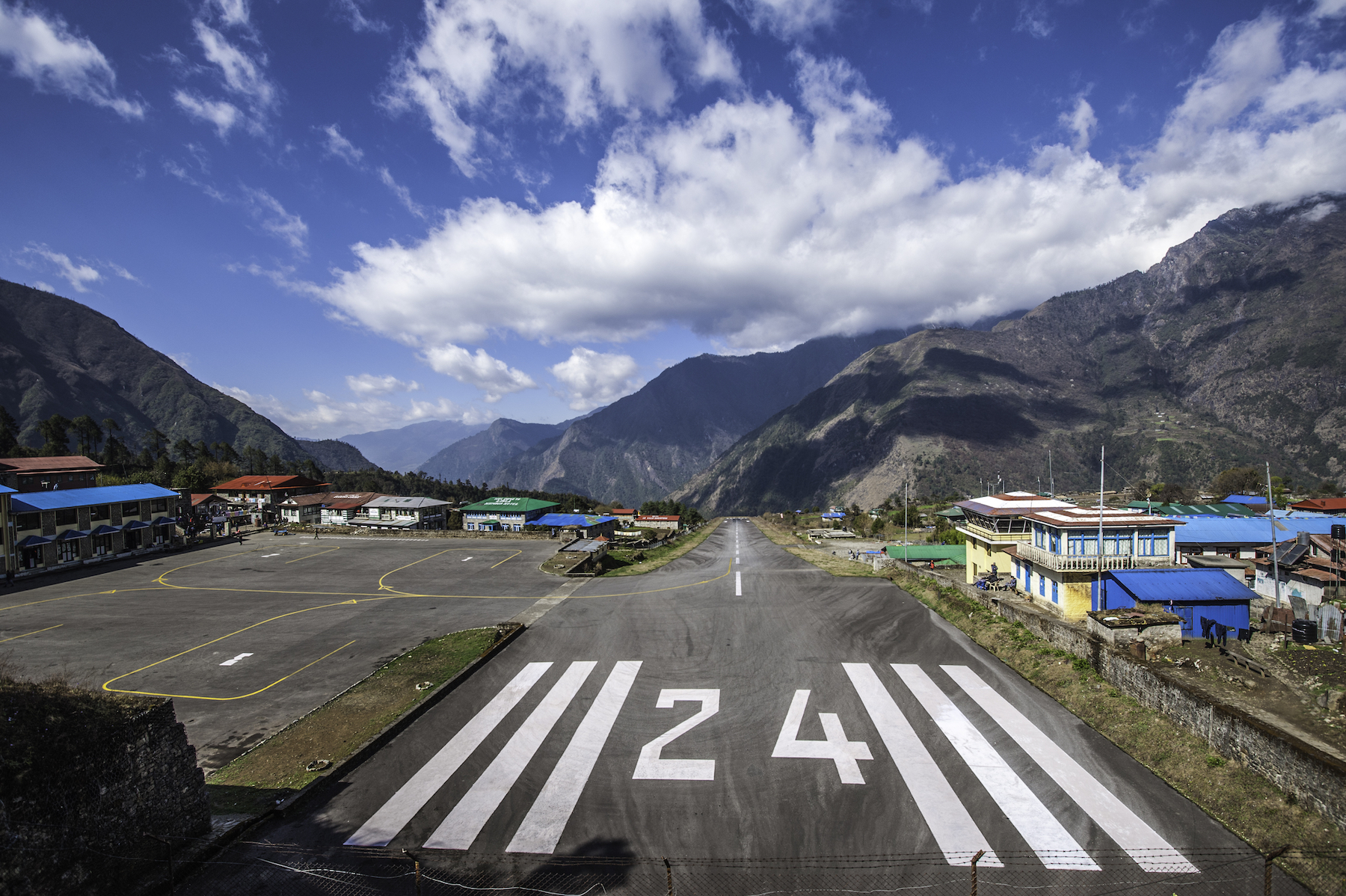 Tenzing-Hillary airport Lukla – Nepal, Himalaya[/caption]
Tenzing-Hillary airport Lukla – Nepal, Himalaya[/caption]
First on our list is the Tenzing-Hillary Airport in Nepal, also known as Lukla Airport. Situated at 2,845 meters (9,334 ft) above sea level, this tiny airport is the gateway to Mount Everest, the world’s highest peak.
Pilots here are tasked with navigating a modest 527-meter (1,729 ft) runway, that not only slopes upward but also has a mountain on one end and a steep 2,000-foot drop into a valley on the other.
Extreme weather conditions, including sudden visibility changes, further compound these challenges, making each takeoff and landing an exercise in precision and nerve. Despite these risks, Lukla Airport remains a crucial hub for climbers and trekkers, and a testament to the extraordinary skills of pilots who dare to fly here.
2. Paro International Airport, Bhutan
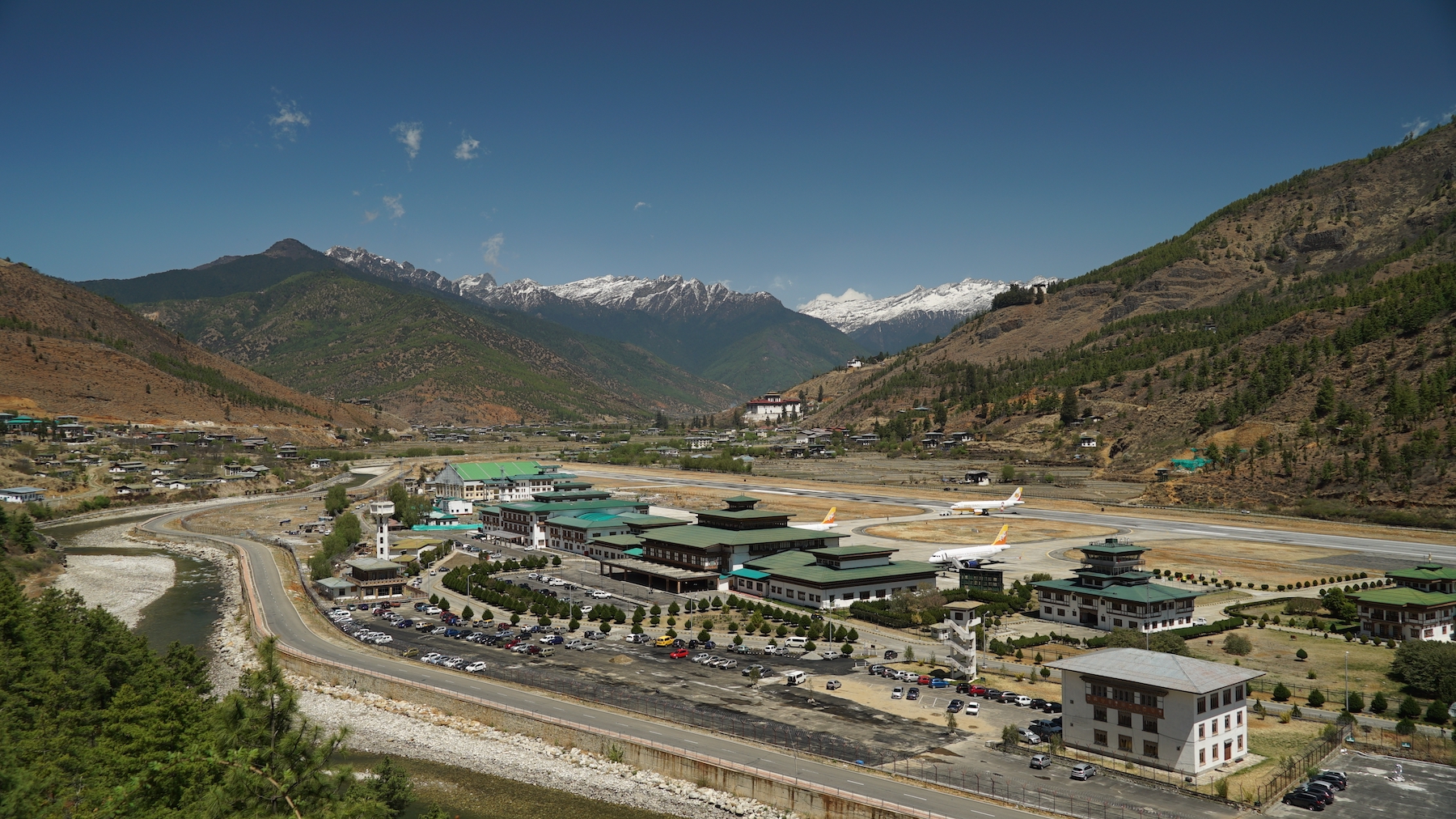 An aerial view of the international airport in Paro Bhutan[/caption]
An aerial view of the international airport in Paro Bhutan[/caption]
Nestled amidst the towering peaks of the Himalayas, Paro International Airport in Bhutan ranks second on our list. This airport is a formidable challenge even for the most seasoned pilots. With its runway only 1,980 meters (6,500 ft) long, and situated 2,235 meters (7,332 ft) above sea level, Paro is surrounded by sharp peaks towering up to 5,500 meters (18,000 ft).
Weather conditions are often extreme and rapidly changeable, and the airport is closed at night and in poor visibility. The approach to the airport involves a steep descent and sharp turns through a narrow valley, with houses scattered on the mountainside perilously close to the aircraft.
Only a handful of certified pilots are qualified to fly to Paro, a testament to the technical skills and mental fortitude required. Despite its reputation, Paro International Airport remains a vital lifeline, connecting Bhutan to the outside world.
3. Courchevel Airport, France
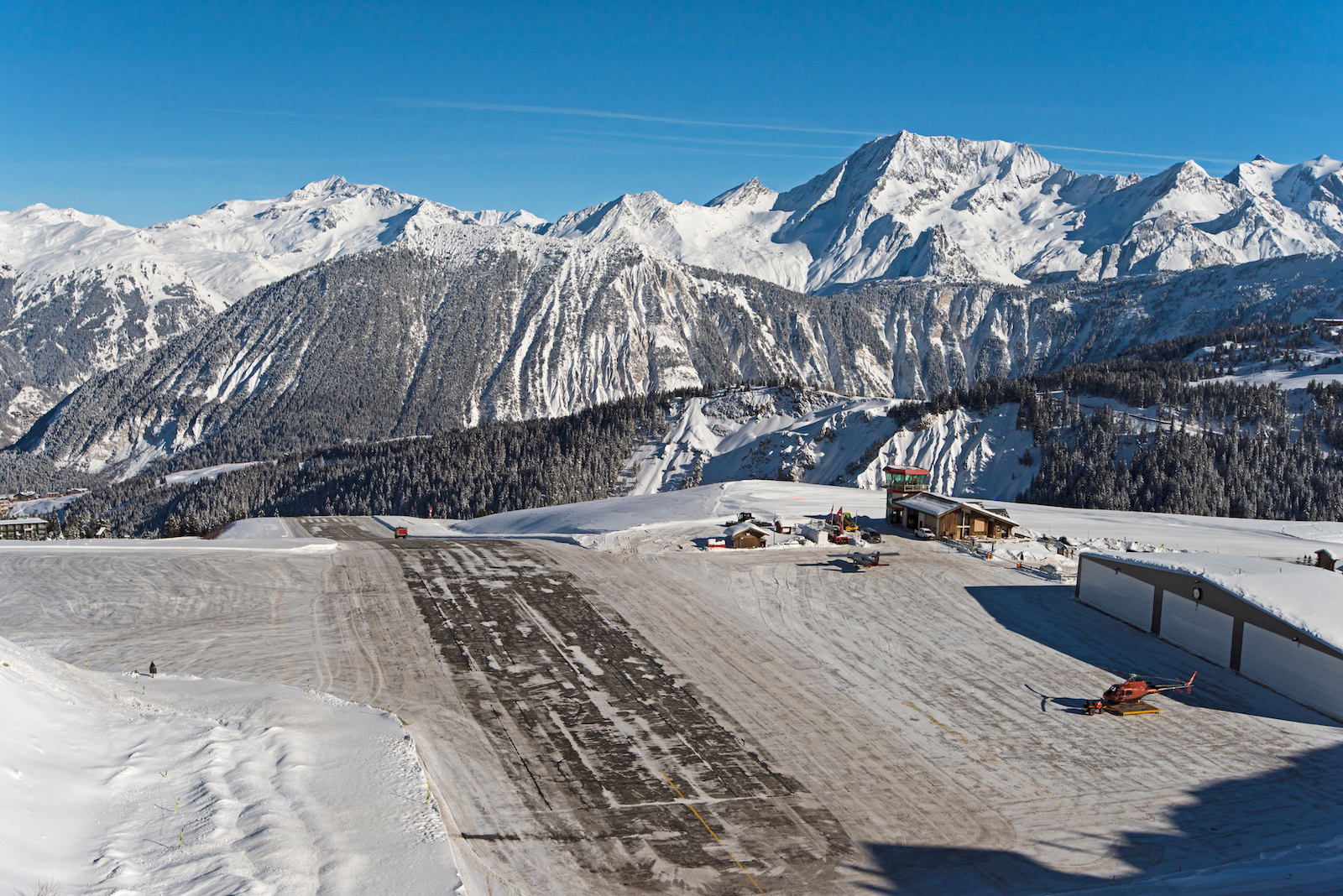 Panoramic landscpae view of small airport altiport runway on the side of a snow covered alpine mountain range in winter[/caption]
Panoramic landscpae view of small airport altiport runway on the side of a snow covered alpine mountain range in winter[/caption]
Tucked in the French Alps, Courchevel Airport secures the third spot on our list. Known for its short, uphill runway of just 537 meters (1,762 ft), this airport is designed for the brave-hearted. The runway ends abruptly, leading into a sheer vertical drop.
Moreover, the airport’s high-altitude location, coupled with the alpine weather conditions, makes it a challenge even for experienced pilots. Landing here requires negotiating the mountains and making a sharp descent onto the sloping runway.
There are no go-around procedures due to the surrounding mountainous terrain. Interestingly, it’s not just pilots who need courage – the airport is also the entry point for one of the most high-end ski resorts in the world, attracting thrill-seekers globally. Hence, despite its hazards, Courchevel Airport holds its own as a unique gateway to adventure.
4. Toncontín International Airport, Honduras
Swathed in the heart of Honduras’ hilly capital, Tegucigalpa, lies the Toncontín International Airport, infamous for its nail-biting landings. The airport has a significantly short runway, stretching only 2,163 meters (7,096 ft), nestled amidst a mountainous landscape.
The approach to this airport is treacherous, demanding pilots to take a sharp, quick banking turn at low altitude to align with the runway. This maneuver is so complex that only pilots with special certification are allowed to land at this airport. Weather conditions, such as fog and rain, further amplify the challenge, making it one of the world’s most dangerous airports for pilots.
Despite these perilous conditions, Toncontín International Airport remains vital, serving as Honduras’ primary gateway. The airport’s inherent risks have not deterred airlines or passengers, with many thrill-seekers viewing the airstrip as an aviation adventure. Its critical role in the country’s connectivity and the unyielding spirit of daring pilots continues to keep Toncontín International Airport operational against all odds.
5. Barra Airport, Scotland
Located on the scenic beach of Traigh Mhor, on Barra island in Scotland, Barra Airport is a unique case on our list of dangerous airports. It’s the only airport in the world where scheduled flights use a beach as the runway. The airport has three runways marked by wooden poles, which become submerged during high tide.
Thus, flight schedules at Barra are governed by the tides, and night flights have only recently become possible due to illuminating reflective strips. Pilots require a special level of alertness and skill to land planes here, as factors like beachgoers, tide timings, and wildlife make this an unusually unpredictable landing strip.
Despite its challenges, the airport attracts tourists for its unparalleled takeoff and landing experiences, and its irreplaceable role in connecting the remote Barra island to mainland Scotland.
6. Gustaf III Airport, Saint Barthelemy
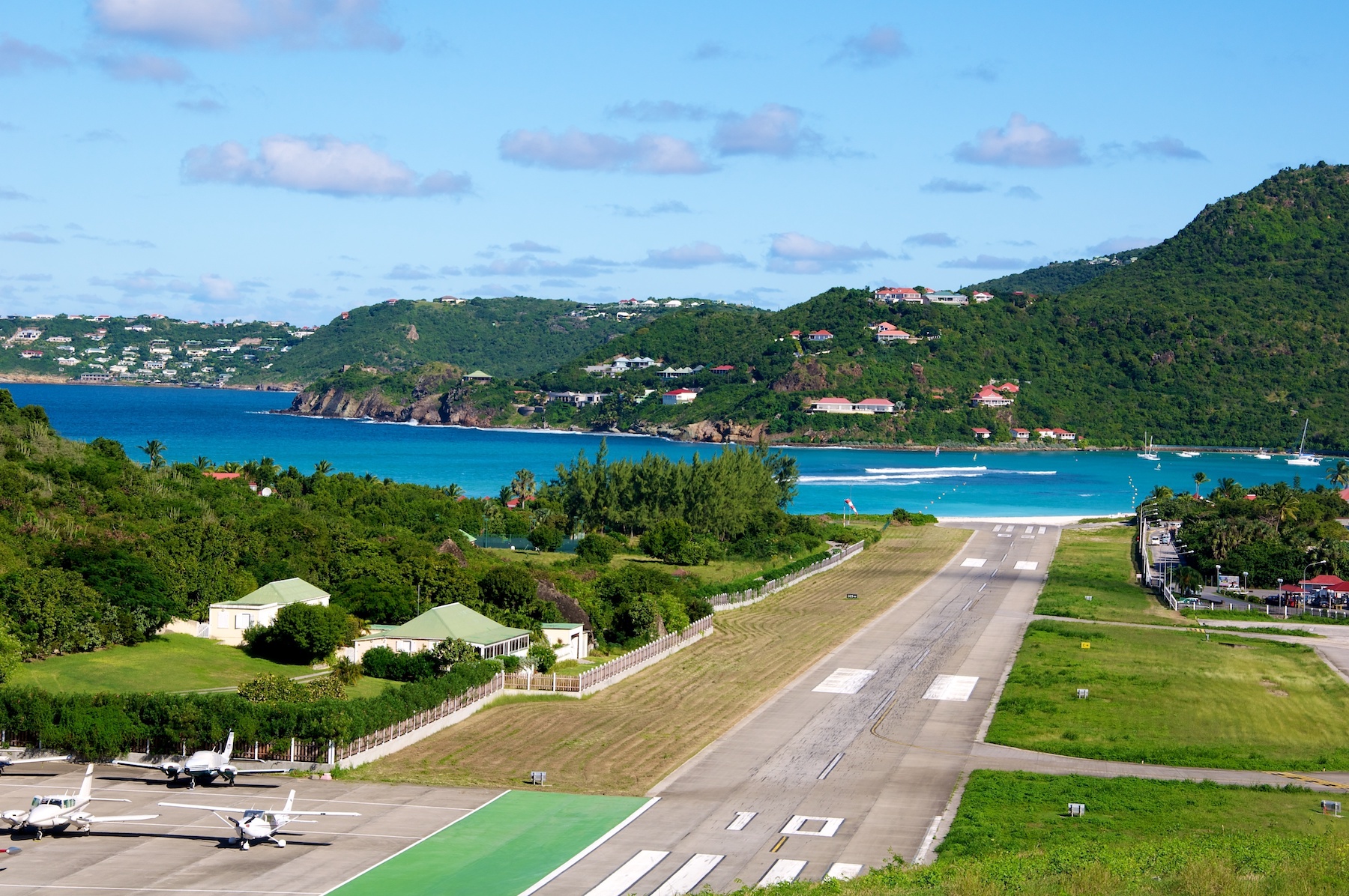 St Barth airport, French West Indies[/caption]
St Barth airport, French West Indies[/caption]
Nestled in the heart of the Caribbean, Gustaf III Airport, also known as Saint Barthelemy Airport, is undoubtedly a pilot’s challenge. This airport finds its place among the world’s most hazardous due to its strikingly short runway which ends abruptly on St. Jean beach.
Planes must descend steeply over a hilltop, only to land on a 650-meter long runway, that is alarmingly close to the beach and traffic. Margin for error is minimal, demanding the utmost precision from pilots. Furthermore, departing aircraft must take off over sunbathers on the beach, adding another dynamic to this already complex situation.
Despite these risks, for many travelers, the adrenaline-pumping landing and takeoff experience at Gustaf III are the highlight of their visit. The airport continues to serve an essential role in connecting the beautiful island of St. Barthélemy to the rest of the world.
7. Gibraltar International Airport, Gibraltar
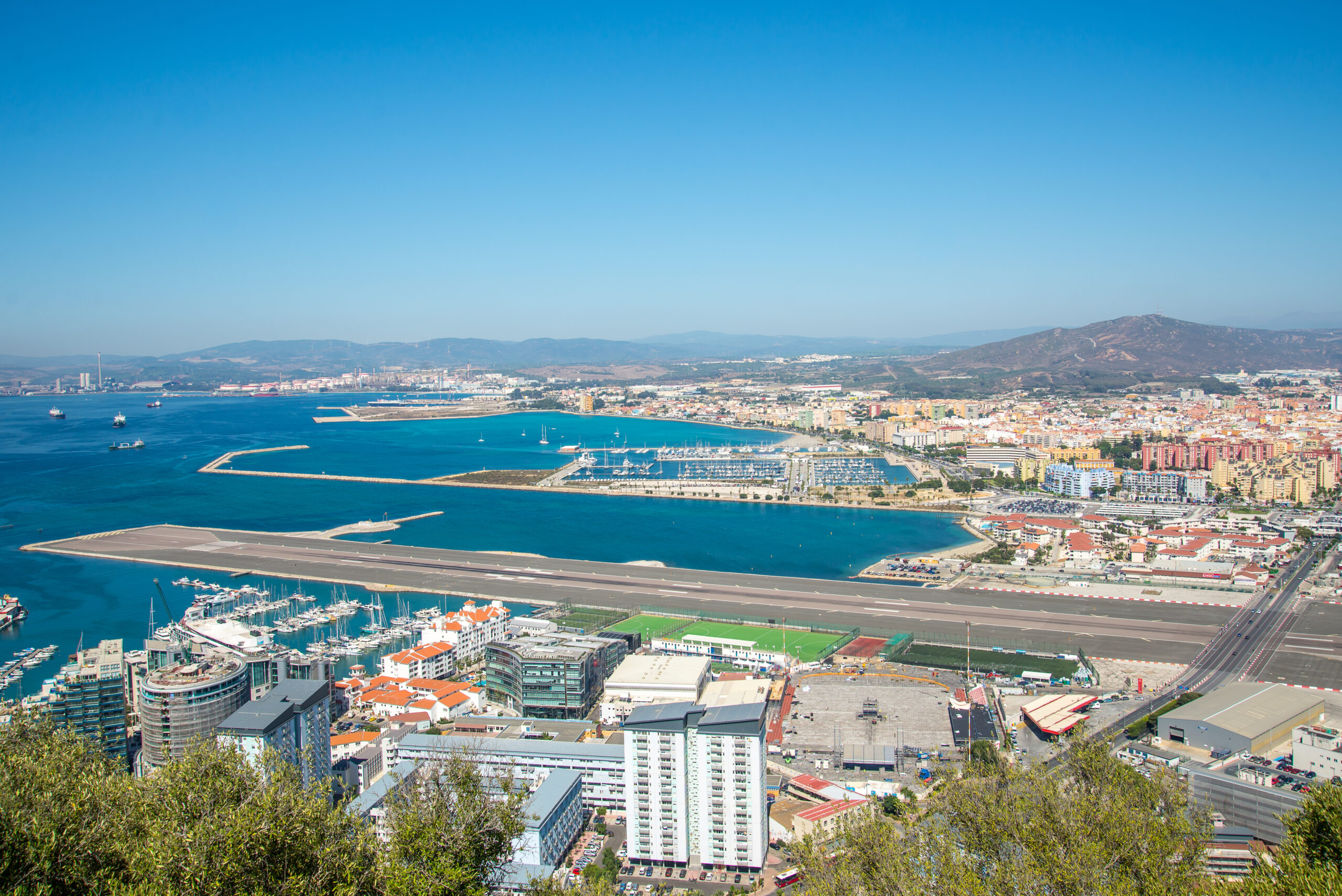
Situated on the tiny peninsula of Gibraltar, the Gibraltar International Airport presents a unique challenge to pilots because of its singular runway, which intersects with the city’s busiest road – Winston Churchill Avenue. This means that every time an aircraft lands or departs, the road has to be closed temporarily.
One might find it surreal to watch cars halt at a traffic signal for planes to pass by, but this forms an everyday scene at this airport. Pilots also have to be wary of strong cross winds around the rock, and the runway stretching out into the sea, leaving no room for errors.
Another intriguing aspect is that the airport is just 500 meters away from the city center, making it one of the closest airports to an urban area. Despite these challenges, Gibraltar International Airport is a crucial hub, facilitating the movement of people between Gibraltar, the UK, and other European destinations. Serving roughly half a million passengers a year, this airport plays an indispensable role in connecting Gibraltar with the world.
8. Princess Juliana International Airport, Saint Martin
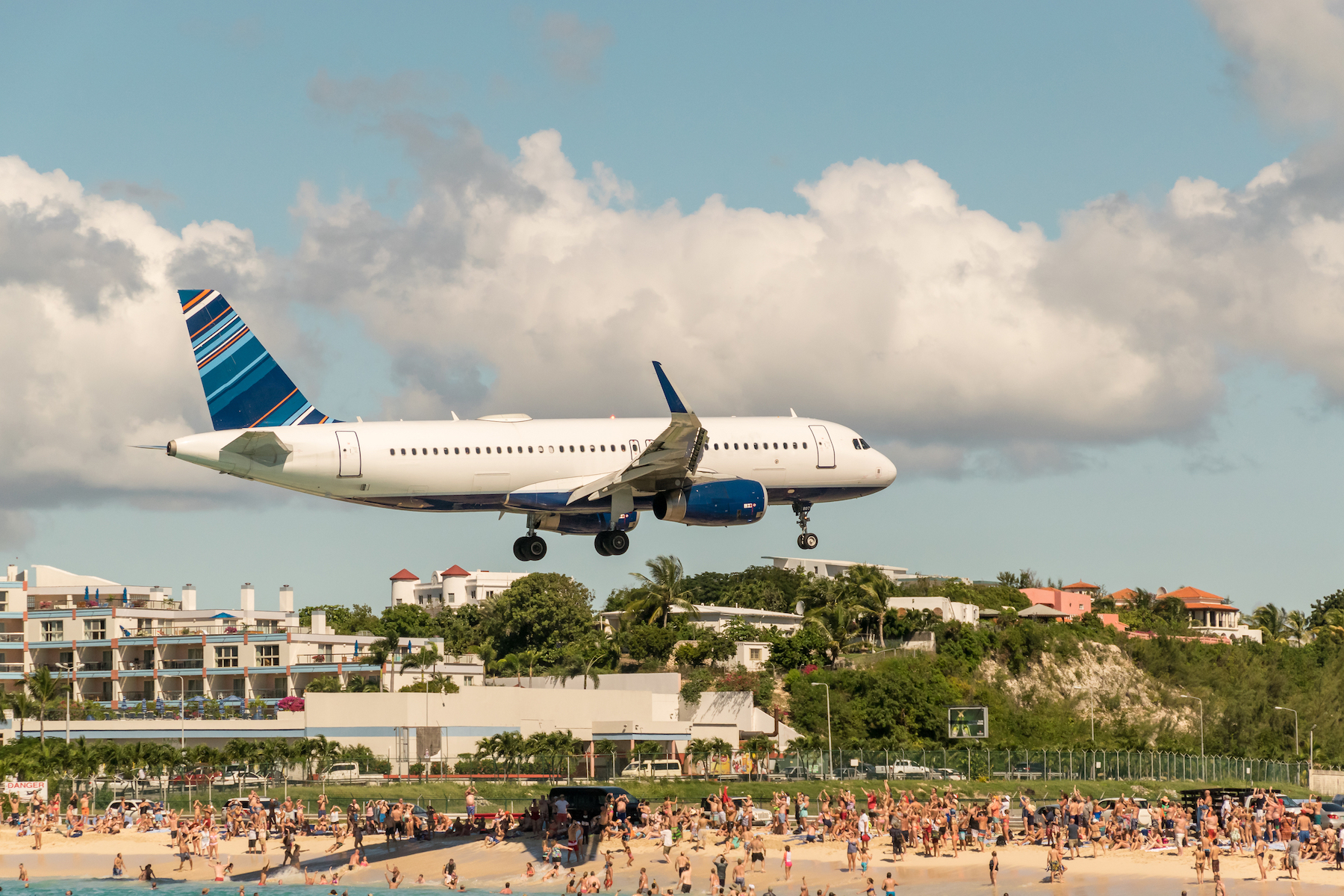
The Princess Juliana International Airport in Saint Martin is famed for its breathtakingly close beach landings. However, what beach-goers find thrilling, pilots regard as a formidable challenge. The airport’s runway is alarmingly short, only 2,180 meters, demanding precision landings from incoming jets.
This often results in aircraft skimming just over the heads of beachgoers at Maho Beach, which borders the runway. To make matters even more complex, pilots must also contend with unpredictable sea breezes and potential tourist distractions.
Despite these difficulties, the airport successfully handles approximately 1.8 million passengers annually, serving as a prominent connection point for major carriers between the Caribbean and larger international destinations. The unforgettable landing experience at Princess Juliana International Airport continues to be a major draw for tourists, making it one of the most famous and photographed airports in the world.
9. Juancho E. Yrausquin Airport, Saba Island
Situated on a tiny Dutch island in the Caribbean, the Juancho E. Yrausquin Airport holds the title for the world’s shortest commercial runway — a mere 400 meters in length. Nestled amidst sharp cliffs on one side and the ocean on the other, the airport offers only the tiniest margin for error, earning it a place among one of the most dangerous airports for pilots.
Given the treacherously short runway, only specially-certified pilots are allowed to land here. While it primarily serves smaller aircraft and helicopters, the thrill of landing at this airport also attracts adventure-seeking tourists, adding to the pressure on pilots.
Despite its chilling reputation, the airport operates without fail, connecting Saba Island to nearby Caribbean islands, and thus plays a crucial role in the region’s tourism industry. The adrenaline-pumping experience of flying into Juancho E. Yrausquin Airport makes it a unique part of Saba Island’s charm.
10. Narsarsuaq Airport, Greenland
Located in the southern part of icy Greenland, Narsarsuaq Airport is notorious among pilots for its treacherous approach. The airport is surrounded by fjords, and the only safe pathway to the runway is through a narrow, curving valley, a challenge even for the most experienced pilots.
Add to it the frequent occurrence of severe weather conditions, including heavy snowfall and blizzards, and the task becomes even more daunting. These climatic factors, combined with the fact that the airport lacks modern navigation equipment, make Narsarsuaq one of the most challenging airports for pilots to land.
Despite these circumstances, this airport serves as an essential lifeline, connecting the remote areas of Greenland with the rest of the world. Although the journey to Narsarsuaq Airport may not be for the faint-hearted, the stunning views of Greenland’s icy landscapes as you descend more than make up for the adrenaline-charged landing experience.
It’s no wonder then that Narsarsuaq Airport, with its dangerous yet breathtaking approach, has earned a place on this list of the world’s most dangerous airports.
As dangerous as these airports are, weather and visibility makes even the most safest airport dangerous and for that reason many airport runways are built with infrastructure to help guide the aircrafts at such low visibility using systems known as Instrument Landing Systems. To know more about Instrument Landing Systems check this post.
Some more interesting facts about other airports around the world
Airports with shortest runways in Canada
- Billy Bishop Toronto City Airport in Toronto, Ontario. It has a runway length of 749 m (2,460 ft).
- Sault Ste. Marie Airport in Sault Ste. Marie, Ontario. It has a runway length of 1,219 m (4,000 ft).
- Charlottetown Airport in Charlottetown, Prince Edward Island. It has a runway length of 1,524 m (5,000 ft).
- Greater Moncton Roméo LeBlanc International Airport in Moncton, New Brunswick. It has a runway length of 1,676 m (5,500 ft).
- St. John’s International Airport in St. John’s, Newfoundland and Labrador. It has a runway length of 1,738 m (5,700 ft).
Airports with the shortest runway lengths in the USA
- Simko Field Airport in Inkom, Idaho has a runway length of 122 m (400 ft). It is a private-use airport that requires prior permission to land.
- Ousel Falls Airport in Big Sky, Montana has a runway length of 274 m (900 ft)13. It is a public-use airport that is close to resorts and trails.
- Hinshaw Airport in Liberty, North Carolina has a runway length of 305 m (1,000 ft)1. It is a public-use airport that is owned by Hinshaw Greenhouses.
- Wilson Bar USFS Airstrip in Yellow Pine, Idaho has a runway length of 305 m (1,000 ft)1. It is a public-use airport that is operated by the US Forest Service.
- Soldier Bar USFS Airport in Big Creek, Idaho has a runway length of 305 m (1,000 ft)1. It is a public-use airport that is operated by the US Forest Service.
Airports with the shortest runway lengths in India
- Trichy International Airport in Tiruchirappalli, Tamil Nadu has a runway length of 2,480 m (8,136 ft).
- Lengpui Airport in Aizawl, Mizoram has a runway length of 2,500 m (8,202 ft).
- Shimla Airport in Shimla, Himachal Pradesh has a runway length of 1,230 m (4,035 ft).
- Baljek Airport in Tura, Meghalaya has a runway length of 1,006 m (3,300 ft).
- Kullu–Manali Airport in Bhuntar, Himachal Pradesh has a runway length of 1,143 m (3,750 ft).
Airports with the shortest runway lengths in Europe
- The shortest commercial runway airport in Europe is Westray Airport in Westray, Scotland. It has a runway length of 291 m (955 ft).
- The second shortest commercial runway airport in Europe is Foula Airfield in Foula, Shetland Islands, UK. It has a runway length of 382 m (1,252 ft)
- The third shortest commercial runway airport in Europe is Netherthorpe Airfield in Worksop, England, UK. It has a runway length of 382 m (1,253 ft).
- The fourth shortest commercial runway airport in Europe is Corlier Aerodrome in Corlier, France. It has a runway length of 350 m (1,148 ft)
- The fifth shortest commercial runway airport in Europe is Luzern-Beromünster Airport in Beromünster, Switzerland. It has a runway length of 400 m (1,312 ft).
Airports with the shortest runway lengths in China
- The shortest commercial runway airport in China is Lhasa Gonggar Airport in Lhasa, Tibet. It has a runway length of 4,000 m (13,123 ft).
- The second shortest commercial runway airport in China is Ngari Gunsa Airport in Shiquanhe, Tibet. It has a runway length of 4,500 m (14,764 ft).
- The third shortest commercial runway airport in China is Daocheng Yading Airport in Daocheng, Sichuan. It has a runway length of 4,200 m (13,780 ft). It is also the highest civilian airport in the world at an elevation of 4,411 m (14,472 ft).
- The fourth shortest commercial runway airport in China is Qamdo Bamda Airport in Qamdo, Tibet. It has a runway length of 5,500 m (18,045 ft) . It is the longest civil airport runway in the world and was formerly the highest civilian airport until 2013.
- The fifth shortest commercial runway airport in China is Kunming Changshui International Airport in Kunming, Yunnan. It has a runway length of 4,000 m (13,123 ft).
Conclusion
Airports such as Juancho E. Yrausquin Airport and Narsarsuaq Airport, despite their reputations for danger and adrenaline-inducing landings, are vital hubs that connect remote and enchanting parts of our world.
They stand as testament to human innovation and courage, operating under unconventional and challenging conditions to bridge the gap between isolated communities and the rest of the globe. These airports not only offer thrilling landing experiences but also provide opportunities for travelers to witness some of the most stunning landscapes on Earth.
They serve as powerful reminders of the adventurous spirit inherent in travel. If you would like to know what keep those pilots motivated to take do the duty of flying through these difficult airports check out this blog

